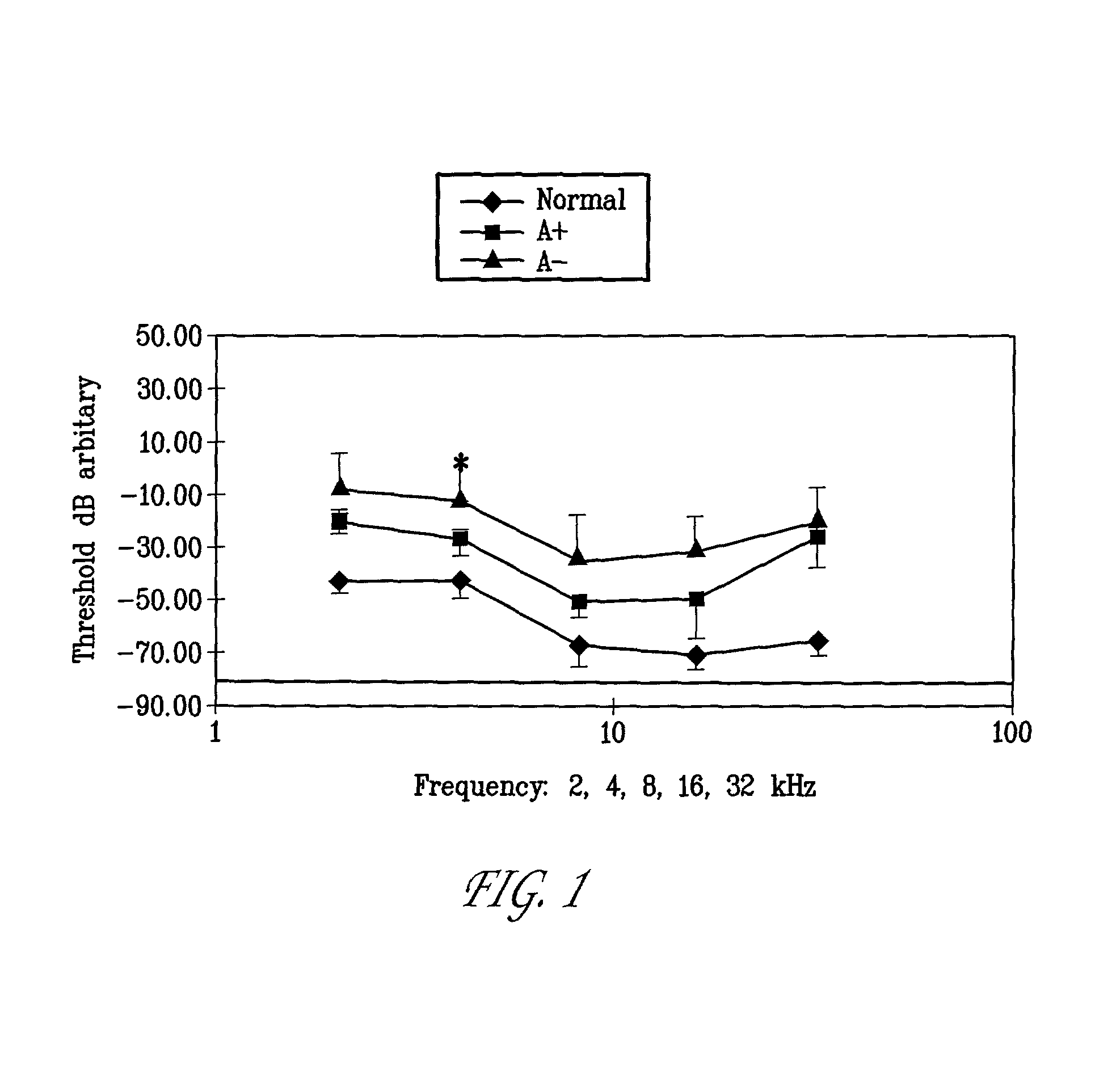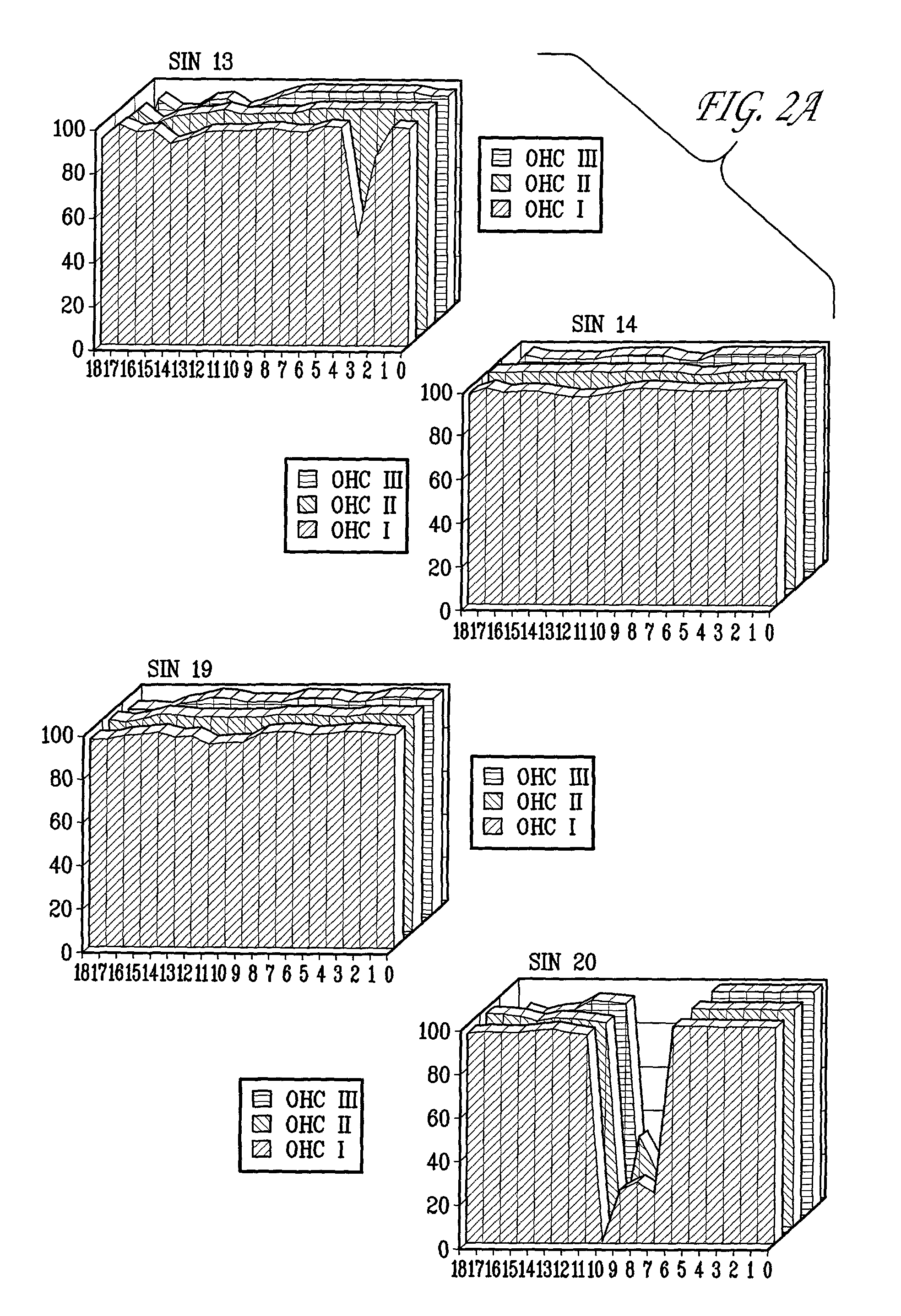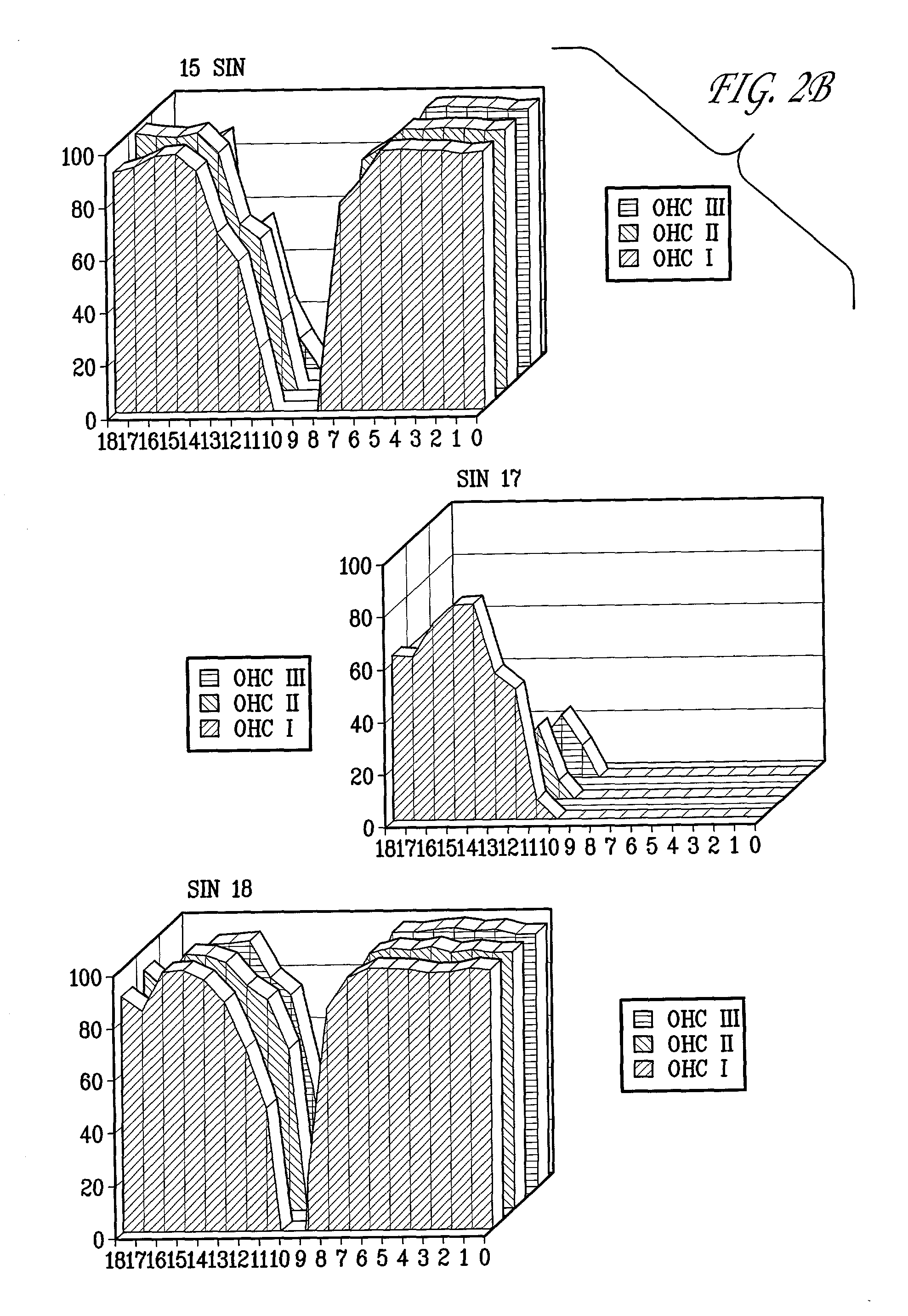Methods for preventing/treating damage to sensory hair cells and cochlear neurons
a technology of sensory hair cells and cochlear neurons, applied in the direction of antinoxious agents, drug compositions, packaging goods types, etc., can solve the problems of communication problems, significant hearing loss, and significant hearing loss, so as to prevent sudden sensorineural hearing loss, prevent the death of sensory hair cells, and prevent the loss of sense of balance
- Summary
- Abstract
- Description
- Claims
- Application Information
AI Technical Summary
Benefits of technology
Problems solved by technology
Method used
Image
Examples
example 1
Prevention of Hearing Impairment / Cell Death
[1100]Baseline hearing of 8 pigmented guinea pigs (200-300 g) was tested by ABR as described below. ABR is a measure of hearing function. Four animals were treated with daily subcutaneous (s.c.) injections of the compound of Formula II, 1 mg / kg, starting 24 hours prior to noise trauma and lasting until 21 days after exposure to the noise trauma. Four animals served as controls and received only vehicle (the fourth animal died under anaesthesia). All the animals were exposed to traumatic octave band noise, center frequency 4.0 kHz, 125 dB SPL (sound pressure level) for 105 min.
[1101]ABR thresholds were again determined 21 days after exposure to the noise trauma ABR thresholds were measured with System II hardware and BioSig software (Tucker Davis Technology). Stimulus with 1 ms cos2 rise and fall and 18 ms plateau was presented with Beyer earphone connected to speculum (placed in the meatus of the external ear canal) at a rate of 20 Hz. Stim...
example 2
Prevention of Hearing Impairment / Apoptosis
[1109]Noise lesioning. Adult Dunkin-Hartley female guinea pigs (weight 300-500 g) were exposed, 4 animals at a time, to octave band noise, with a center frequency of 4.0 kHz, 120 dB SPL for 6 hr as described in Example 1. Fragmented hair cell nuclei were assessed from noise-exposed cochleas immediately and 1, 2, 4, 6, 8 and 14 days after noise exposure. Noise-exposed and nonexposed guinea pigs were decapitated under deep anesthesia and inner ears were perilymphatically perfused with 4% paraformaldehyde in PBS, and processed for 5-mm-thick paraffin-embedded sections (Ylikoski et al., Hear Res 65:69-78, 1993; Ylikoski et al., Hear Res 124:17-26, 1998). TUNEL-staining was performed as described below. DNA fragmentation was also verified by DAPI nuclear counterstain (see below). Further, trauma-induced nuclear fragmentation was verified by morphological analysis of contralateral cochleas that were perilymphatically fixed with 2.5% glutaraldehyde...
example 3
Protective Effect of the Compound of Formula II Against Neomycin in Neonatal Rat Cochlear Explants
[1120]The compound of Formula II attenuated neomycin-induced cochlear sensory hair cell loss in vitro. The effect of the compound of Formula II on neomycin-induced hair cell degeneration was determined in organotypic cultures of the neonatal organ of Corti.
Cochlear Cultures
[1121]The basal half of cochleas containing the basal and middle turns were dissected from postnatal day 2 Wistar rats. The cultures were maintained on Nuclepore filters (pore size 0.1 mm; Pleasanton, Calif.) placed on a metal grid in F12 medium (Life Technologies, Gaithersburg, Md.) containing 15% fetal bovine serum (Life Technologies). After a 2-hour-long stabilization period, explants were exposed to 100 mM neomycin sulfate (Sigma, St Louis, Mo.) for 48 hr. Formula II (500 nM) was added at the time of initiation of the cultures and every 12 hr thereafter.
Hair Cell Counts in Cochlear Cultures
[1122]Explants were fixe...
PUM
| Property | Measurement | Unit |
|---|---|---|
| angles | aaaaa | aaaaa |
| center frequency | aaaaa | aaaaa |
| frequencies | aaaaa | aaaaa |
Abstract
Description
Claims
Application Information
 Login to View More
Login to View More - R&D
- Intellectual Property
- Life Sciences
- Materials
- Tech Scout
- Unparalleled Data Quality
- Higher Quality Content
- 60% Fewer Hallucinations
Browse by: Latest US Patents, China's latest patents, Technical Efficacy Thesaurus, Application Domain, Technology Topic, Popular Technical Reports.
© 2025 PatSnap. All rights reserved.Legal|Privacy policy|Modern Slavery Act Transparency Statement|Sitemap|About US| Contact US: help@patsnap.com



